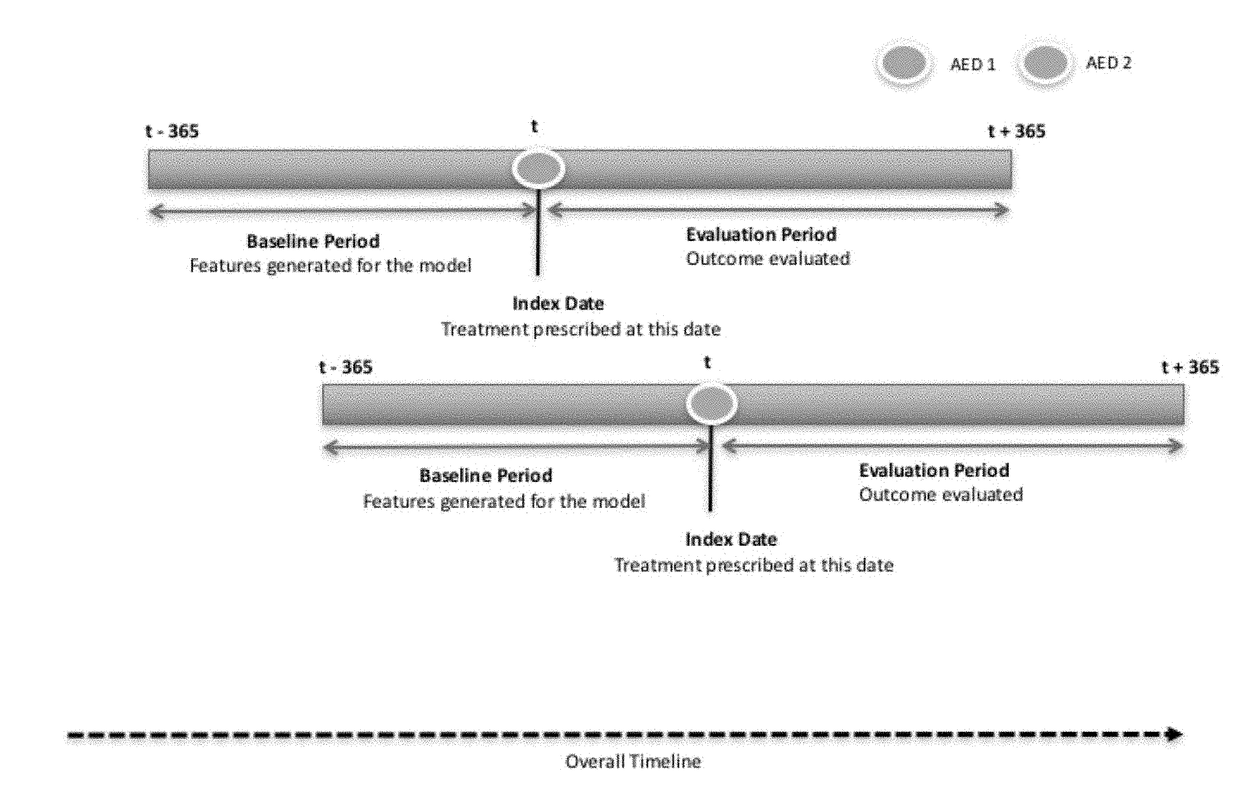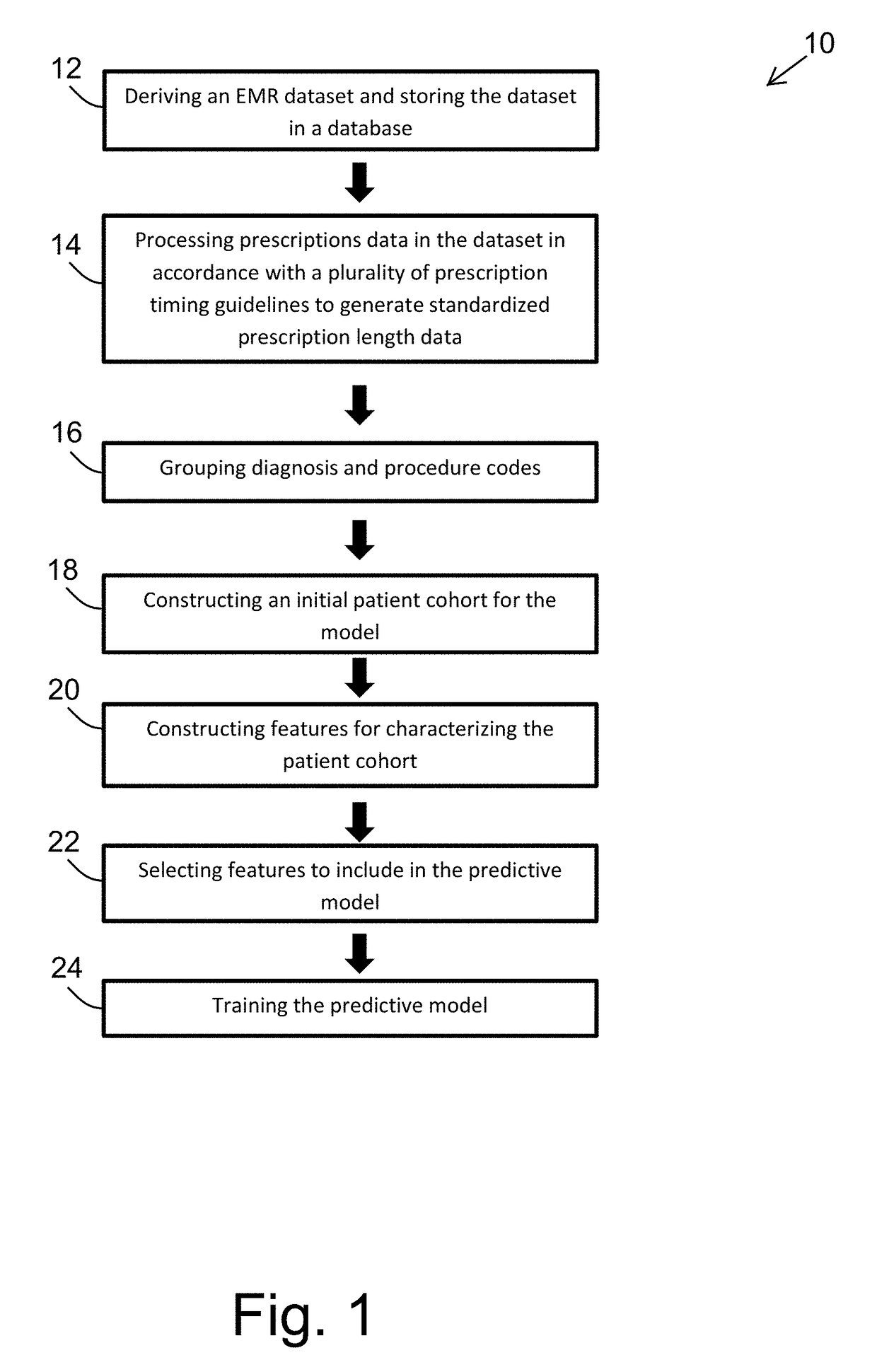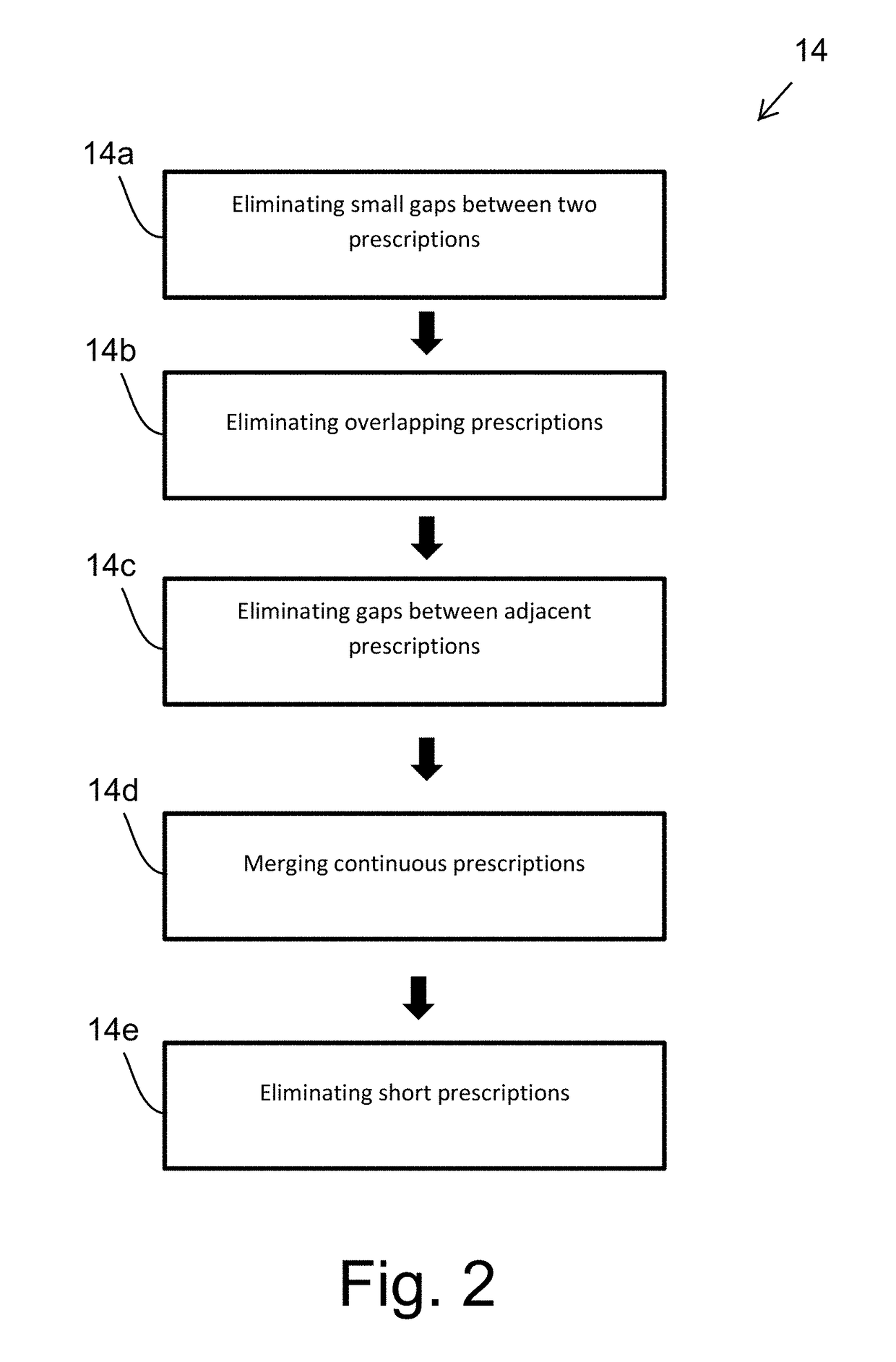Method and system for predicting optimal epilepsy treatment regimes
a treatment regime and epilepsy technology, applied in the field of epilepsy treatment regimes, can solve the problems of debilitating regimens, need for new medications, and patients suffering from this disease, so as to reduce the financial burden of patients, reduce the time taken, and reduce the effect of time taken
- Summary
- Abstract
- Description
- Claims
- Application Information
AI Technical Summary
Benefits of technology
Problems solved by technology
Method used
Image
Examples
Embodiment Construction
and drawings of the present application overlap to an extent with those filed in U.S. application Ser. No.: 15 / 412,806, filed Jan. 23, 2017.
BACKGROUND
[0003]Epilepsy is one of the most common serious neurological disorders and one of the major causes of concern affecting an estimated 50 million people worldwide. The overall annual incidence of epilepsy cases falls between 50 to 70 cases per 100,000 in industrialized countries all the way up to 190 per 100,000 in developing countries. The consequences faced by patients suffering from this disease especially the ones who are prescribed multiple treatment regimens are debilitating considering the resulting effect on their health and quality of life. According to one prediction, approximately 50% of the epilepsy patients achieve seizure control with the first anti-epilepsy drug (AED) prescribed to them, whereas approximately another 20% spend at least 2 to 5 years to find the appropriate AED regimen. The remaining approximately 30% of pa...
PUM
 Login to View More
Login to View More Abstract
Description
Claims
Application Information
 Login to View More
Login to View More - R&D
- Intellectual Property
- Life Sciences
- Materials
- Tech Scout
- Unparalleled Data Quality
- Higher Quality Content
- 60% Fewer Hallucinations
Browse by: Latest US Patents, China's latest patents, Technical Efficacy Thesaurus, Application Domain, Technology Topic, Popular Technical Reports.
© 2025 PatSnap. All rights reserved.Legal|Privacy policy|Modern Slavery Act Transparency Statement|Sitemap|About US| Contact US: help@patsnap.com



